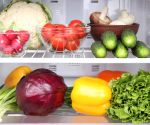Advertisement
Cholesterol is a fatlike substance produced in your liver, it is found in everyone's bloodstream. As part of every body cell, it's essential to human health and cell-building. There's no Recommended Dietary Allowance for consuming enough cholesterol because your body makes it, too.
Cholesterol terms to understand:
Low cholesterol indicates that a given serving contains 20 milligrams or less of cholesterol and 2 grams or less of saturated fat per serving.
Cholesterol free means that the food must contain fewer than 2 milligrams of cholesterol and 2 grams or less of saturated fat per serving.
Please realize that a food claiming to be low in cholesterol or cholesterol free does not mean the food is fat free. Vegetable oils contain no cholesterol, but they are 100% fat.
The terms fat and cholesterol or not interchangeable.
For more information visit a registered dietitian or visit www.eatright.org the website of the Academy of Nutrition and Dietetics.
Cholesterol terms to understand:
Low cholesterol indicates that a given serving contains 20 milligrams or less of cholesterol and 2 grams or less of saturated fat per serving.
Cholesterol free means that the food must contain fewer than 2 milligrams of cholesterol and 2 grams or less of saturated fat per serving.
Please realize that a food claiming to be low in cholesterol or cholesterol free does not mean the food is fat free. Vegetable oils contain no cholesterol, but they are 100% fat.
The terms fat and cholesterol or not interchangeable.
For more information visit a registered dietitian or visit www.eatright.org the website of the Academy of Nutrition and Dietetics.
Continue Learning about Nutrition
Important: This content reflects information from various individuals and organizations and may offer alternative or opposing points of view. It should not be used for medical advice, diagnosis or treatment. As always, you should consult with your healthcare provider about your specific health needs.










